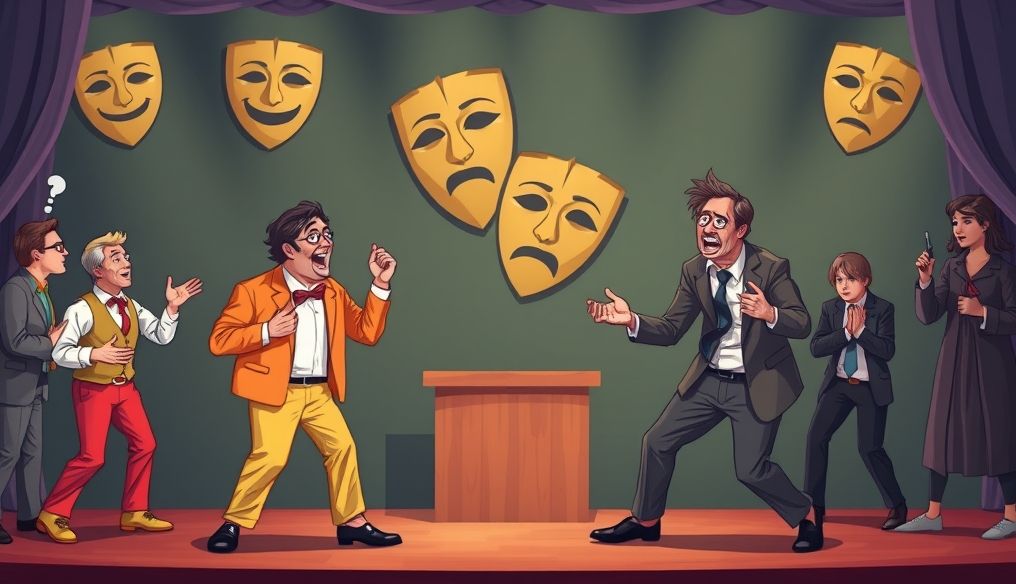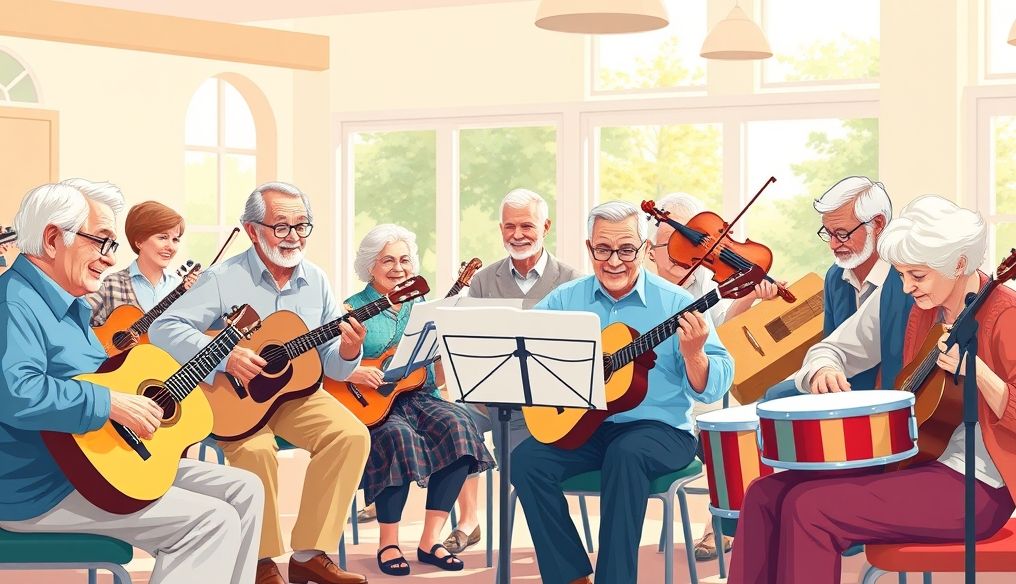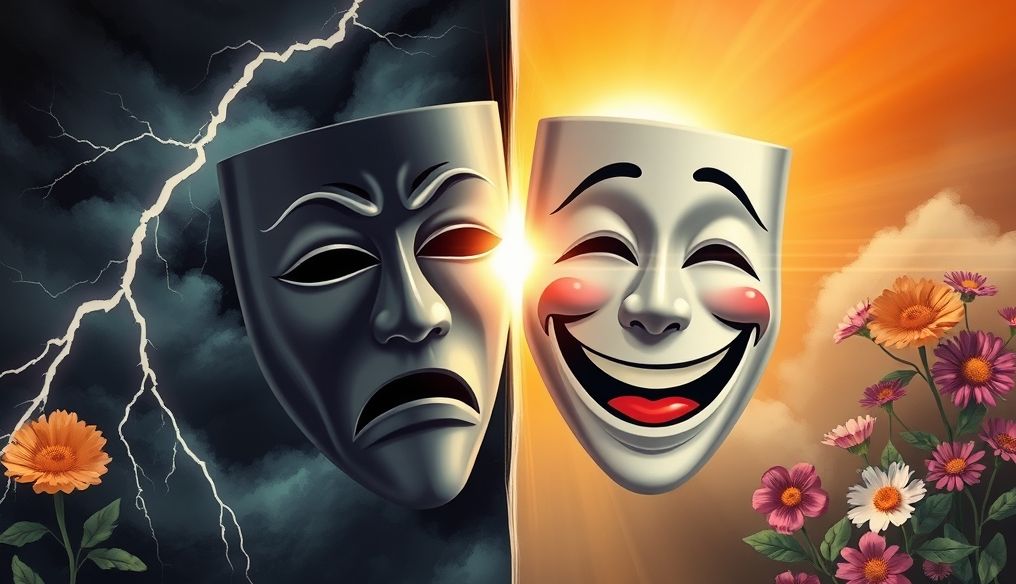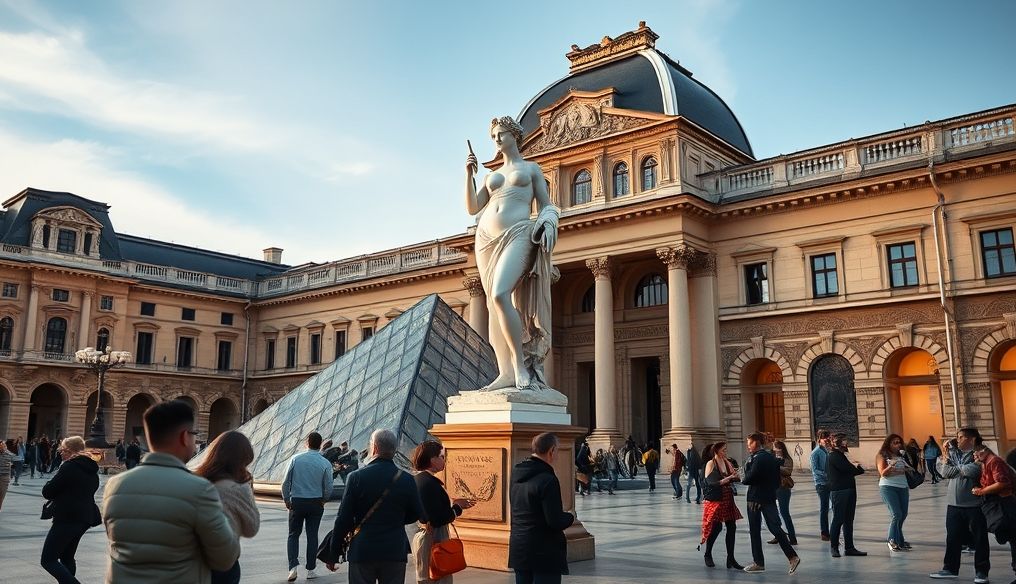Introduction to the World of Theatre: Comedy and Tragedy
Theatre, in its richness and diversity, offers us a window into multiple human experiences. Among the most common and influential types of plays, comedy and tragedy stand out. These two types, despite their apparent differences, represent two sides of the same coin, reflecting different aspects of human existence.
In this article, we will delve into the exploration of comedy and tragedy, analyze their distinctive characteristics, and trace their evolution through history, focusing on the most prominent works and figures that have contributed to shaping this ancient art.
What is Comedy?
Comedy is a type of play that aims to evoke laughter and amusement from the audience. It is often characterized by humorous situations, eccentric characters, and happy endings. Comedy can address serious topics, but it always presents them in a lighthearted and playful manner.
Characteristics of Comedy:
- Humor and Laughter: The primary goal is to entertain and amuse the audience.
- Characters: Characters are often eccentric or exaggerated.
- Situations: Relies on ironies and humorous situations.
- Happy Ending: Comedy usually ends with the resolution of problems and the triumph of good.
Types of Comedy:
- Situational Comedy (Sitcom): Relies on humorous situations that happen to characters in a specific environment.
- Black Comedy: Addresses serious topics in a satirical and humorous way.
- Farce: Relies on exaggeration and absurd situations.
- Romantic Comedy: Focuses on romantic relationships in a humorous way.
What is Tragedy?
Tragedy is a type of play that aims to evoke pity and fear from the audience. It is often characterized by noble characters suffering a tragic fate and sad endings. Tragedy addresses serious topics such as death, betrayal, and destiny.
Characteristics of Tragedy:
- Tragedy: Focuses on the suffering of characters and their tragic fate.
- Characters: Characters are often noble or of high social standing.
- Topics: Addresses serious topics such as death, betrayal, and destiny.
- Sad Ending: Tragedy usually ends with the death of the main character or significant suffering.
Types of Tragedy:
- Classical Tragedy: Inspired by ancient Greek and Roman myths.
- Romantic Tragedy: Focuses on tragic love.
- Modern Tragedy: Addresses contemporary social and political issues.
Historical Evolution of Comedy
The roots of comedy go back to ancient Greece, where it was part of religious celebrations. Comedy evolved through the ages, acquiring new forms. In the Middle Ages, popular comedy emerged, relying on jokes and humorous situations. In the Renaissance, humanistic comedy flourished, focusing on social criticism.
Examples of Comedy Throughout History:
- Aristophanes: An ancient Greek comedic writer, famous for his satirical plays.
- Shakespeare: An English playwright, wrote many famous comedies such as "A Midsummer Night's Dream."
- Molière: A French playwright, famous for his plays that criticize social hypocrisy.
Historical Evolution of Tragedy
Tragedy also originated in ancient Greece and was associated with religious rituals. Tragedy evolved through the ages, acquiring new forms. In the Middle Ages, the popularity of tragedy declined, but it reappeared in the Renaissance. In the modern era, tragedy has become more complex and addresses contemporary social and political issues.
Examples of Tragedy Throughout History:
- Aeschylus: An ancient Greek tragic writer, considered the founder of tragedy.
- Sophocles: An ancient Greek tragic writer, famous for his plays such as "Oedipus Rex."
- Shakespeare: An English playwright, wrote many famous tragedies such as "Hamlet" and "Romeo and Juliet."
The Difference Between Comedy and Tragedy
The main difference between comedy and tragedy lies in the goal and style. Comedy aims to evoke laughter and amusement, while tragedy aims to evoke pity and fear. Comedy uses humorous situations and eccentric characters, while tragedy uses noble characters and tragic fate.
| Property | Comedy | Tragedy |
|---|---|---|
| Goal | Evoke laughter and amusement | Evoke pity and fear |
| Characters | Eccentric, exaggerated | Noble, of high social standing |
| Topics | Light, playful | Serious, tragic |
| Ending | Happy | Sad |
Importance of Comedy and Tragedy in Theatre
Comedy and tragedy are considered the most important types of plays because they reflect different aspects of human life. Comedy helps us laugh and enjoy life, while tragedy helps us understand suffering and death. Both are necessary to understand the world around us.
In addition, comedy and tragedy can be powerful tools for expressing social and political views. Comedic plays can criticize authority and expose social hypocrisy, while tragic plays can raise awareness of social issues and call for change.
Comedy and Tragedy in the Modern Era
In the modern era, comedy and tragedy have evolved significantly. New types of comedy have emerged, such as black comedy and situational comedy. Tragedy has also become more complex and addresses contemporary social and political issues such as racism, poverty, and war.
Examples of Comedy and Tragedy in the Modern Era:
- Samuel Beckett: An Irish playwright, famous for his absurdist plays such as "Waiting for Godot."
- Arthur Miller: An American playwright, famous for his plays that address social issues such as "Death of a Salesman."
- Tom Stoppard: A British playwright, famous for his plays that combine comedy and tragedy.
Conclusion
Comedy and tragedy are two essential types of plays, each with its own distinct characteristics and importance. Despite their apparent differences, they represent two sides of the same coin, reflecting different aspects of human existence. By understanding comedy and tragedy, we can appreciate the richness and diversity of theatre and discover more about ourselves and the world around us.
I hope this article has provided you with a comprehensive overview of comedy and tragedy in theatre. Enjoy watching plays and exploring this wonderful art!




